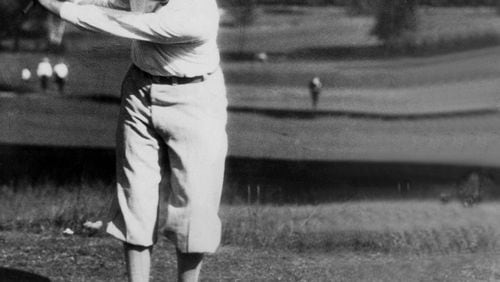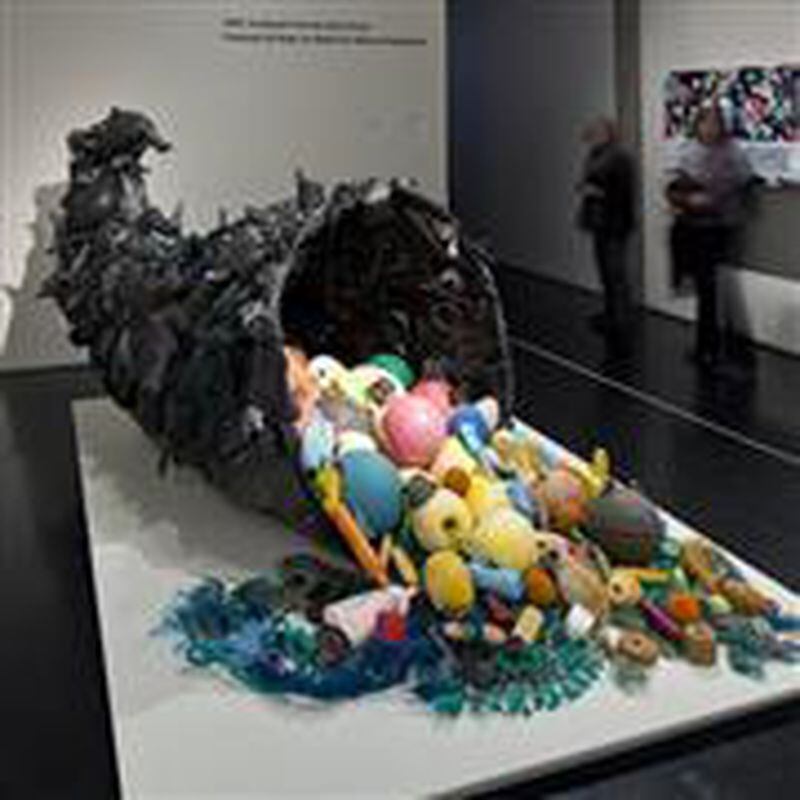There’s something you should know about Bobby Jones, the greatest amateur golfer who ever lived, and the only other individual besides astronaut John Glenn to get two ticker-tape parades in Manhattan.
Yes, Jones won all four major tournaments in Britain and the U.S. in one year. “No one had done that before, and no one has done it since then,” said Randy Gue, curator of modern political and historical collections at Emory University’s Manuscript and Rare Book Library (MARBL).
But what made that feat even more improbable is that Jones accomplished it in his spare time, using archaic equipment.
By 1930, when Jones won the Grand Slam, most serious players had switched to the new metal-handled clubs, while Jones was still playing with hickory-shafted clubs. Using clubs with wooden handles had its drawbacks. “If you swing too hard it actually torques the head,” Gue said.
Reproductions of the humble clubs that Jones used to win the most prestigious tournaments in golf will be on display at MARBL, as part of a new exhibit to tell the life story of Georgia’s golf prodigy.
“Bobby Jones: The Game of Life” opens Feb. 12, in the Schatten Gallery on Level 3 of the Robert W. Woodruff Library. It will remain on view through November.
The exhibit title comes from a familiar Jones quote: “Golf is the closest game to the game we call life. You get bad breaks from good shots; you get good breaks from bad shots — but you have to play the ball where it lies.”
Jones won 13 major championships, including five U.S. amateurs, four U.S. Opens, three British Opens and one British amateur, according to the New Georgia Encyclopedia. Yet he remained an amateur, and worked at jobs including real estate and the law to support his game and his family.
The materials on display are drawn largely from two archives at MARBL: the Bobby Jones collection, acquired in 1967; and the collection of Jones biographer Sidney L. Matthew, acquired in 2012.
8 a.m. to 9 p.m. daily. 540 Asbury Circle, Atlanta. Parking is available in Emory's Fishburne and Oxford Road decks. marbl.library.emory.edu. BO EMERSON
VISUAL ART
Exhibit, symposium shed light on marine debris
Credit: hpousner
Credit: hpousner
A flip-flop thrown away in Thailand floats all the way to Hawaii. A bottle swept away in a Japanese tsunami takes up residence on the Alaskan shore.
How concerned should we be?
Greatly, based on the evidence in the exhibition “Gyre: The Plastic Ocean,” on view through June 19 at the David J. Sencer CDC Museum. The show is part scientific documentation and part artistic response to the five global accumulation points for plastic debris, gathered by rotating ocean currents called gyres.
Organized by the Anchorage Museum in Alaska, “Gyre: The Plastic Ocean” includes the work of 25 artists, among them Pam Longobardi, the Georgia State University art professor who won the $50,000 Hudgens Prize in 2013. The exhibit also features findings of a scientific expedition that year to study marine debris in Alaska. Some of the artwork incorporates trash gathered during that journey.
Sencer CDC Museum admission is free, but parking (also free) may be limited and a vehicle inspection is required to enter. Visitors also need a valid federal or state-issued photo ID. 9 a.m.-5 p.m. weekdays (until 7 p.m. Thursdays). 1600 Clifton Road N.E. Atlanta. cdc.gov/museum
In conjunction with the exhibit, the Welch Foundation at Georgia State University, the Sencer CDC Museum and the Plastic Pollution Coalition have announced the 2015 Welch Symposium titled “The Plastic Gyre: Artists, Scientists and Activists Respond,” March 26-27 at GSU and the CDC Museum. Conceived by Longobardi, the free conference will feature panel sessions, film screenings, a pop-up art exhibit and more. More information: email museum@cdc.gov. HOWARD POUSNER







